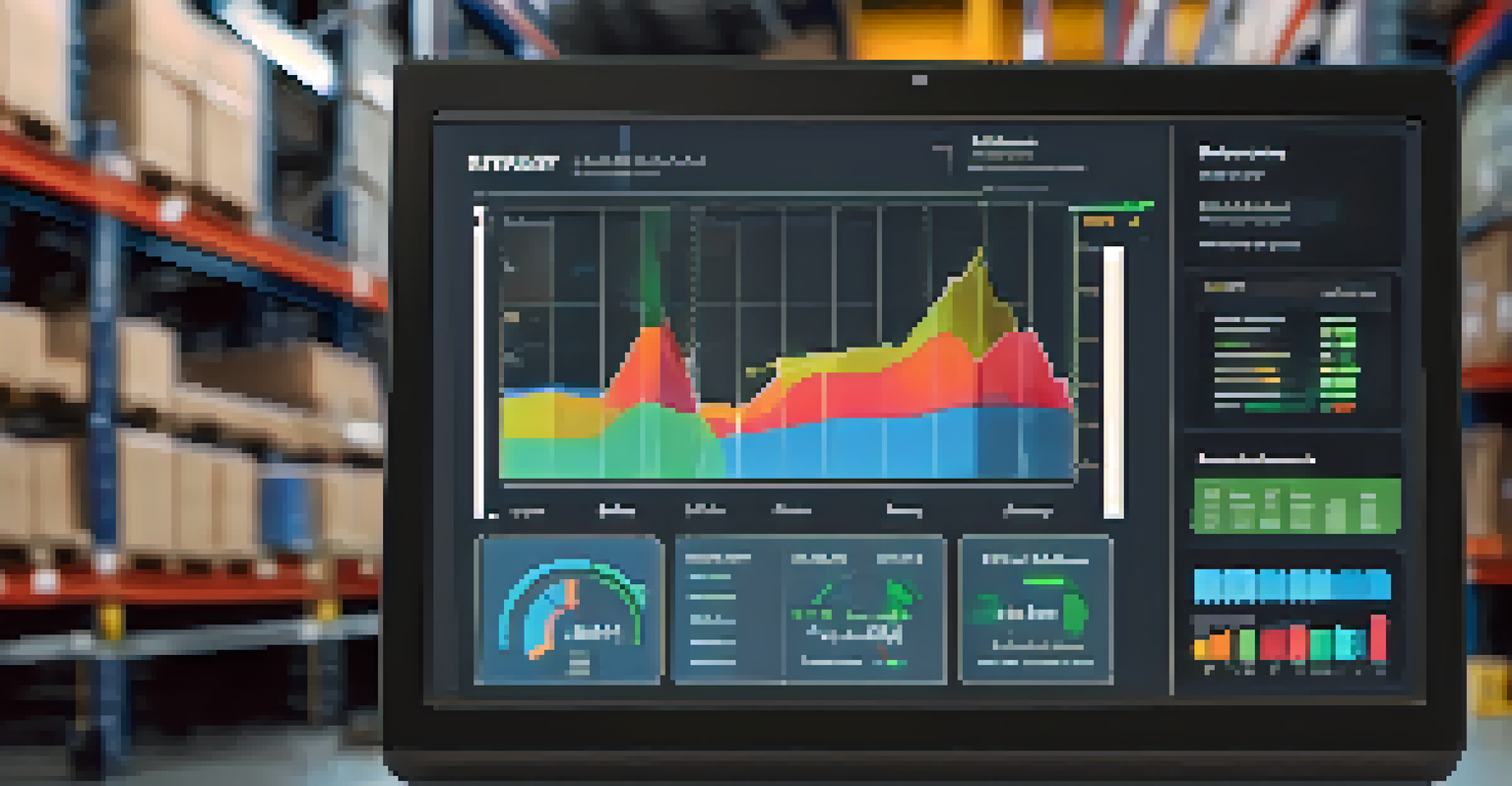The Impact of Automation on Supply Chain Efficiency

Understanding Automation in Supply Chain Management
Automation in supply chain management refers to the use of technology to perform tasks without human intervention. This can include robotics in warehouses, software for inventory management, and automated data analytics. By streamlining various processes, automation aims to reduce errors and increase speed, ultimately leading to enhanced operational efficiency.
Automation is not just a tool, it’s a strategy that companies need to implement to stay competitive in the market.
For instance, consider a warehouse where robots are tasked with sorting and packing products. This not only speeds up the process but also minimizes the risk of human error, which can lead to costly mistakes. As a result, companies can fulfill orders more quickly and accurately, improving customer satisfaction.
Moreover, automation allows for real-time data monitoring and analysis. This means businesses can adapt to changes in demand or supply chain disruptions almost instantly, making them more resilient in the face of challenges.
Key Benefits of Automation in Supply Chains
One of the primary benefits of automation is the significant increase in efficiency it brings to supply chains. Tasks that once took hours can now be completed in minutes, freeing up human resources for more strategic activities. This shift not only boosts productivity but also enhances the overall workflow.

Another advantage is cost reduction. With automation, businesses can lower labor costs and minimize waste, leading to more budget-friendly operations. For example, automated inventory systems can ensure optimal stock levels, reducing the need for excessive storage space and the expenses associated with it.
Boosting Efficiency with Automation
Automation significantly increases supply chain efficiency by completing tasks faster and allowing human resources to focus on strategic activities.
Lastly, automation improves accuracy in supply chain operations. By minimizing human involvement in repetitive tasks, the likelihood of errors decreases significantly. This accuracy translates into better inventory management and order fulfillment, ultimately benefiting both the business and its customers.
Challenges of Implementing Automation
Despite its benefits, implementing automation in supply chains is not without challenges. One major hurdle is the initial investment required for technology and training. Companies must weigh the upfront costs against the long-term gains, which can be a tough decision, especially for smaller businesses.
The future of supply chain management is about using technology to not only improve efficiency but also enhance customer satisfaction.
Additionally, there can be resistance from employees who may fear job loss due to automation. It's crucial for businesses to communicate the benefits of automation and involve employees in the transition. By emphasizing how automation can relieve them from monotonous tasks, companies can foster a more positive outlook.
Furthermore, integrating new technologies with existing systems can be complex. Companies need to ensure that their current processes are compatible with automated solutions, which may require additional time and resources.
The Role of Data Analytics in Automation
Data analytics plays a pivotal role in enhancing the effectiveness of automation in supply chains. By analyzing vast amounts of data, businesses can identify trends, forecast demand, and optimize inventory levels. This data-driven approach allows for smarter decision-making and more efficient supply chain operations.
For instance, predictive analytics can help companies anticipate surges in demand, enabling them to adjust their supply chains accordingly. This proactive strategy not only prevents stockouts but also reduces excess inventory, ultimately saving costs.
Cost Reduction Through Automation
Implementing automation can lead to substantial cost savings by lowering labor expenses and minimizing waste in operations.
Moreover, real-time data provided by automated systems allows for continuous monitoring and adjustments. Businesses can quickly respond to any disruptions or changes in the market, ensuring they remain agile and competitive.
Future Trends in Supply Chain Automation
The landscape of supply chain automation is rapidly evolving, with new technologies emerging on a regular basis. One exciting trend is the rise of artificial intelligence (AI) and machine learning, which can enhance automation by enabling systems to learn and adapt over time. This means supply chains can become even more efficient and responsive to changing conditions.
Another trend is the increasing use of the Internet of Things (IoT), where devices communicate with each other to streamline processes. For example, IoT sensors can monitor inventory levels and automatically reorder products when they fall below a certain threshold, ensuring optimal stock levels without manual intervention.
Finally, sustainability is becoming a key focus in supply chain automation. Companies are exploring eco-friendly technologies and processes that not only improve efficiency but also reduce their environmental impact, aligning with consumers' growing preference for sustainable practices.
Case Studies of Successful Automation
Many companies have successfully implemented automation to enhance their supply chain efficiency, providing valuable lessons for others. For instance, Amazon has utilized robots in its fulfillment centers to streamline operations and handle high volumes of orders. This approach not only speeds up delivery times but also enhances accuracy in order processing.
Similarly, Walmart has employed automated inventory management systems that track product levels in real-time. This technology allows Walmart to optimize stock and reduce waste, ensuring customers find what they need when they visit the store or shop online.
Data Analytics Enhances Automation
Leveraging data analytics in automation allows businesses to make informed decisions, optimize inventory levels, and respond quickly to market changes.
These case studies highlight the diverse applications of automation and the tangible benefits it brings, serving as inspiration for other businesses looking to improve their supply chains.
Conclusion: Embracing Automation for Future Success
In conclusion, the impact of automation on supply chain efficiency is profound and multifaceted. By embracing automation, companies can enhance their operations, reduce costs, and improve customer satisfaction. As technology continues to advance, the potential for automation to revolutionize supply chains will only grow.
However, businesses must approach automation thoughtfully, addressing challenges such as initial investments and employee concerns. By fostering a culture of innovation and collaboration, companies can ensure a smoother transition to automated systems.

Ultimately, those who invest in automation today position themselves for greater success in the future, ready to adapt to an ever-changing marketplace.